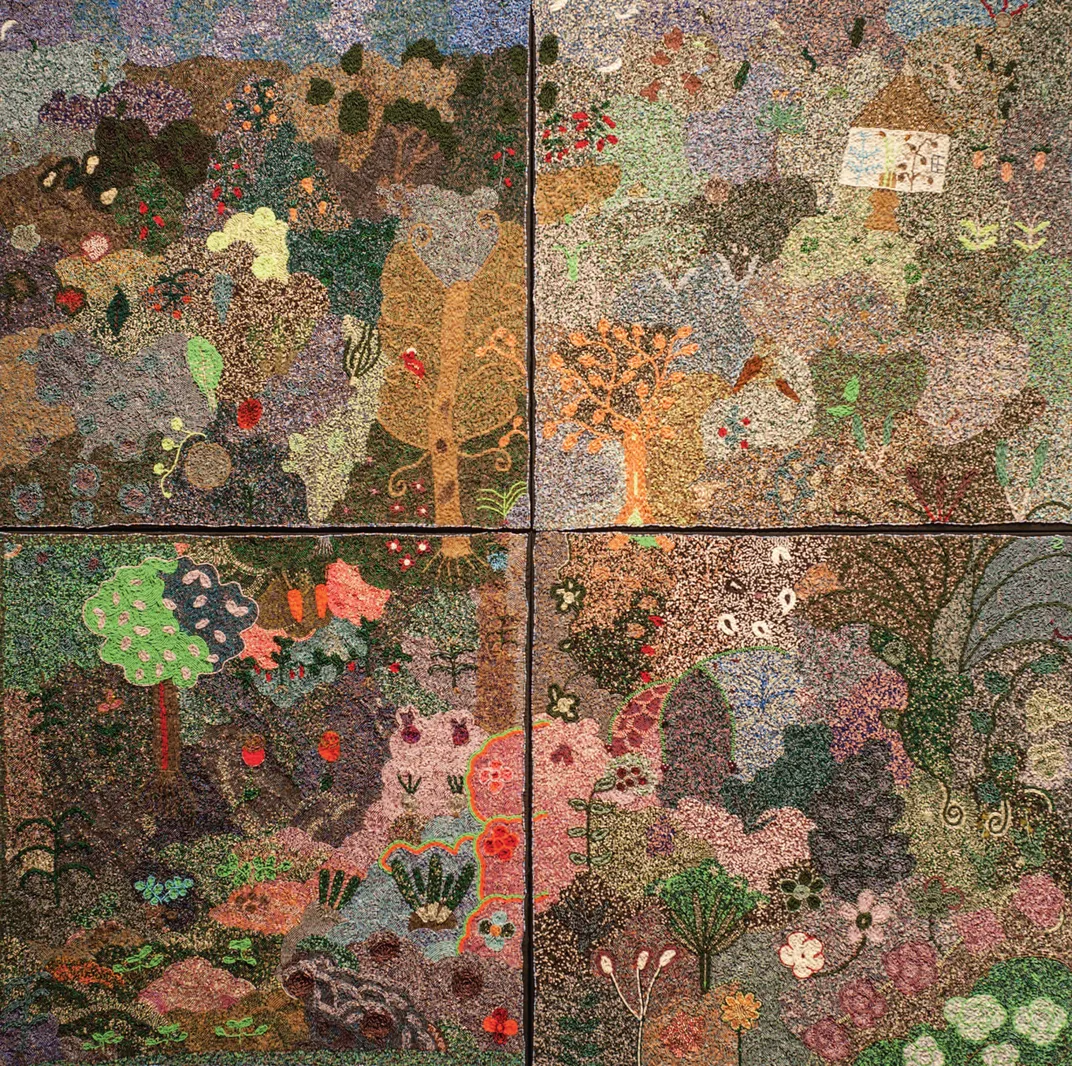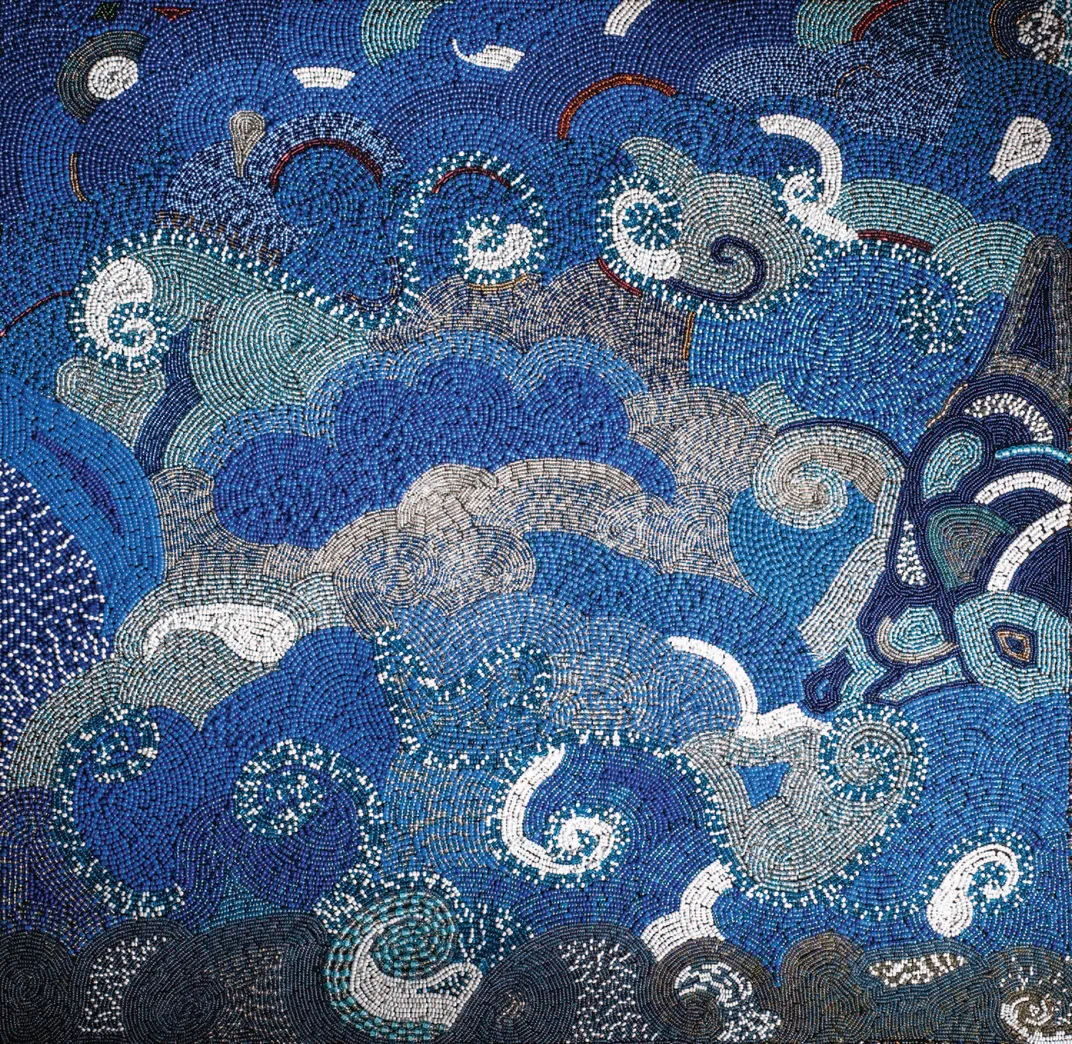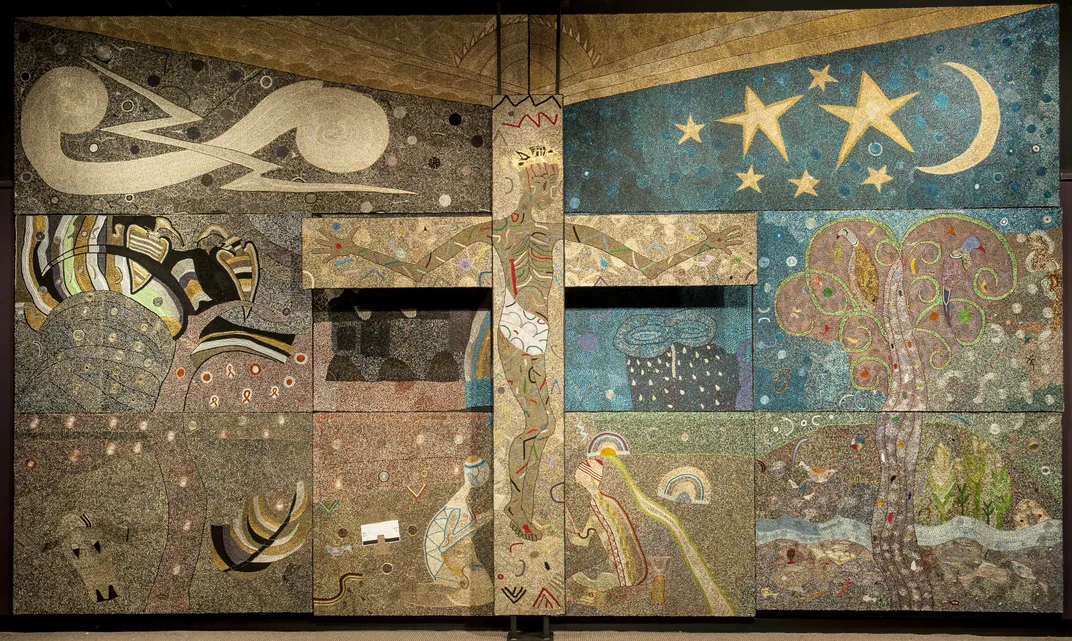Painting with Beads: A New Art Form Emerges in South Africa
“Ubuhle Women” at the Anacostia Community Museum showcases the work of a community of master beaders
/https://tf-cmsv2-smithsonianmag-media.s3.amazonaws.com/filer/33/ce/33ce1b48-80f9-4e46-bbf6-39926a76966f/cherry-tree.jpg)
At Little Farm, a former sugar plantation near Durban, women paint with beads. "Ubuhle Women: Beadwork and the Art of Independence," a new exhibition at the Anacostia Community Museum, showcases the dazzling creations of this community of artists, living and working together in rural KwaZulu-Natal, South Africa.
Called Ubuhle, or "beauty" in the Xhosa language, the community was founded in 1999 by migrant worker Ntombephi "Induna" Ntobela and local resident Bev Gibson, who co-curated the exhibition. Together the Ubuhle women have developed a new take on a South African tradition: the ndwango, a fabric panel of colored glass beads. Unlike traditional beadwork, which is worn on the body, these artworks are displayed on the walls like paintings. "By stretching this textile like a canvas," writes Gibson, "the artists transform the flat cloth into a contemporary art form."

Ubuhle came together in response to post-apartheid poverty in South Africa. Five of the artists are from the Transkei, the birthplace of Nelson Mandela, but left home in search of opportunity and financial independence. They found it at Little Farm, working day in and day out to create commissioned ndwangos; a single panel can take more than ten months to complete. At the same time, the women are raising families and running households. They bead while they cook, while they chop wood and while they feed the children. Work is an inextricable part of their daily lives, and vice versa. "The patterns and colors take on what happens to these artists over those months," says James Green, a research scholar at the Metropolitan Museum of Art and co-curator of the exhibition. "They become true portraits of that time. These panels are their hope. They put everything into them."

They also become portraits of each individual artist. Zandile Ntobela incorporates a cherry blossom pattern in all of her ndwangos, paying homage to the cherry tree that blooms in Little Farm's garden every year. Zondlile Zondo hews to her Zulu heritage—the other artists are Xhosa—with a distinctively bright and varied color palette, while the vibrant hues in Thando Ntobela's work reflect her joie de vivre. Nonhlakanipho Mndiyatha's signature is a house, normally a white cottage. "That is what she wants—a permanent home for her children and herself," says Gibson. Ntombephi Ntobela, whose nickname "Induna" means "leader," reveals her quiet dignity in My Sea, My Sisters, My Tears (2011), a vivid depiction of water, which she calls the "connection between all that lives."
"Not only is Ubuhle showing the world women taking control, relying on skills that they have, but also that each of these women has a distinct style of working," says Gibson. "That elevates it from craft to art. They're not simply a human factory."

The differences are particularly conspicuous in group works such as My Mother's Garden, for which each of four artists composed a panel depicting her ideal garden; and The African Crucifixion, the striking, floor-to-ceiling centerpiece of the exhibition. The latter is made up of seven individual panels and uses biblical imagery to tell a contemporary story about hardship and hope in South Africa.
The exhibition has given these women more than a platform to share their artwork; it has empowered them to see themselves as artists. "It's been very moving to see this change, [to see them] realize that what they're creating is hugely significant and really hasn't been done before," says James Green. "This is a brand new art form, taking this old tradition and making it really relevant and new."